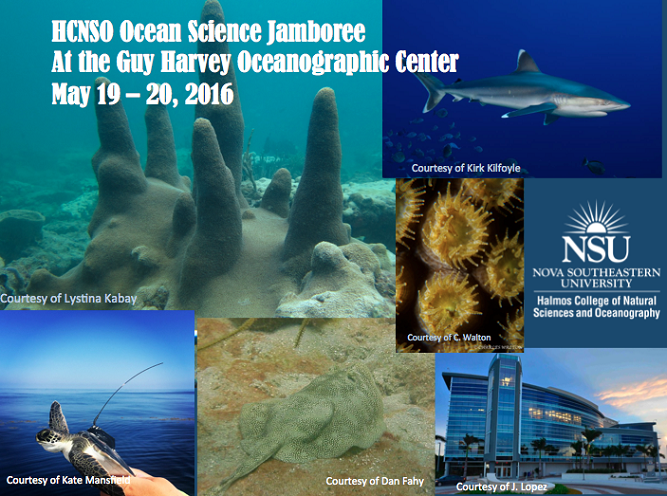Microbial Community Dynamics of Diseased Acropora cervicornis
Location
Guy Harvey Oceanographic Center Facility
Start
5-20-2016 9:30 AM
End
5-20-2016 9:45 AM
Abstract
Scleractinian corals play host to numerous symbiotic organisms known collectively as the coral holobiont. A primary component of the coral holobiont is the bacterial community, as it plays a role in the defense of the coral as well as having been linked to compromised health conditions. One compromised health condition, known as rapid tissue loss (RTL), has impacted Acropora cervicornis populations at two sites off Southeast Florida. This study examines the bacterial and archaeal communities of A. cervicornis colonies from Southeast Florida using 454 amplicon pyrosequencing of the V4 hypervariable region of 16S rDNA. Samples were collected from tissue, mucus, and the surrounding water and sediment. Analysis of approximately 649,000 16S rDNA sequences shows bacterial diversity was highest in sediments and when looking within tissue, diversity was greatest in the diseased samples. Distinct communities were observed between the mucus, the tissue, and sediment and water samples. At the operational taxonomic unit (OTU) level, mucus and tissues were different from the environment, while health state in the tissue revealed distinct changes from healthy to disease. While similarities in terms of presence/absence between healthy and disease OTUs exist, there are significant changes in relative abundance. These differences indicate avenues for further investigation into the potential pathogen(s) responsible for RTL. In addition, the results from this study have important implications for population restoration efforts which utilize nursery propagated colonies and the associated risk of disease transmission.
Microbial Community Dynamics of Diseased Acropora cervicornis
Guy Harvey Oceanographic Center Facility
Scleractinian corals play host to numerous symbiotic organisms known collectively as the coral holobiont. A primary component of the coral holobiont is the bacterial community, as it plays a role in the defense of the coral as well as having been linked to compromised health conditions. One compromised health condition, known as rapid tissue loss (RTL), has impacted Acropora cervicornis populations at two sites off Southeast Florida. This study examines the bacterial and archaeal communities of A. cervicornis colonies from Southeast Florida using 454 amplicon pyrosequencing of the V4 hypervariable region of 16S rDNA. Samples were collected from tissue, mucus, and the surrounding water and sediment. Analysis of approximately 649,000 16S rDNA sequences shows bacterial diversity was highest in sediments and when looking within tissue, diversity was greatest in the diseased samples. Distinct communities were observed between the mucus, the tissue, and sediment and water samples. At the operational taxonomic unit (OTU) level, mucus and tissues were different from the environment, while health state in the tissue revealed distinct changes from healthy to disease. While similarities in terms of presence/absence between healthy and disease OTUs exist, there are significant changes in relative abundance. These differences indicate avenues for further investigation into the potential pathogen(s) responsible for RTL. In addition, the results from this study have important implications for population restoration efforts which utilize nursery propagated colonies and the associated risk of disease transmission.


